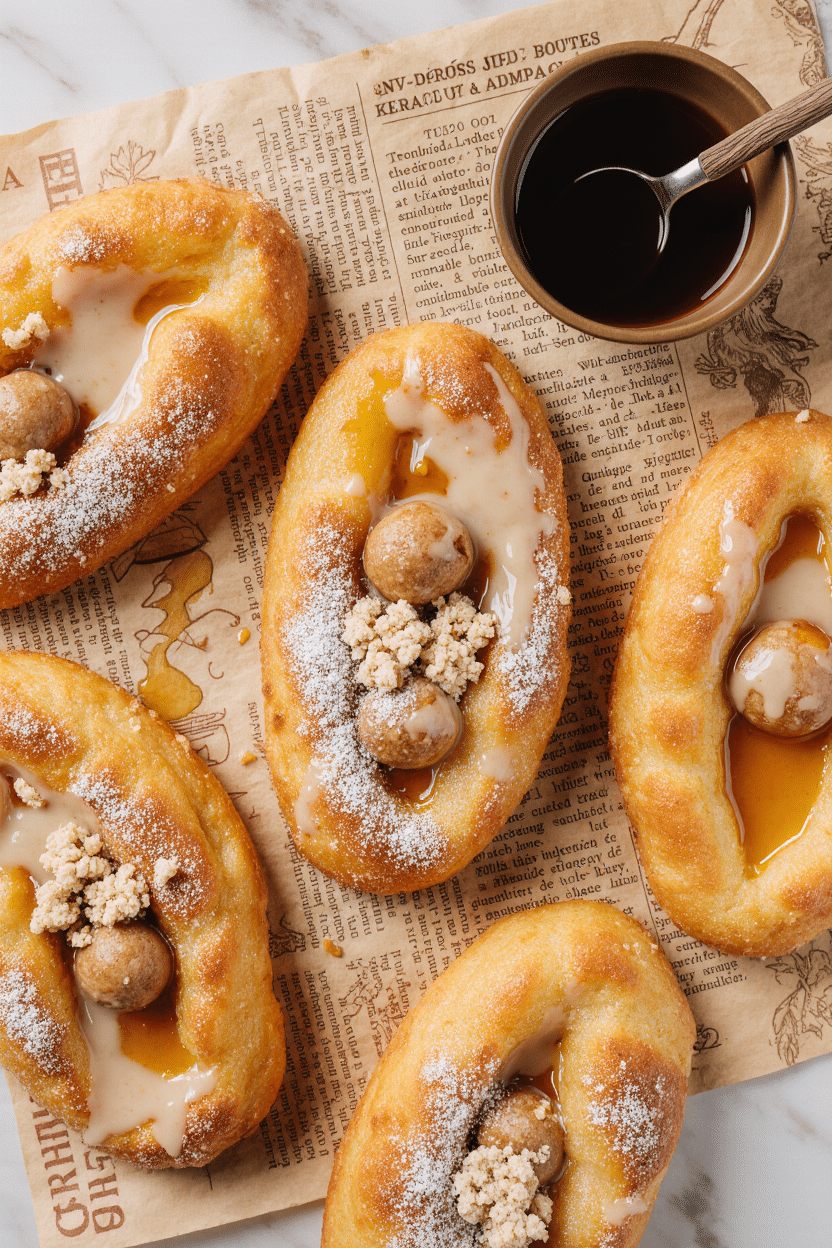Maple Beaver Tails are a beloved Canadian street food made of deep-fried, fluffy dough shaped like a beaver’s tail, coated in a rich maple glaze. This homemade version brings the iconic sweet treat to your kitchen. The dough is soft and airy, while the browned butter maple glaze adds a nutty sweetness. Customize them with your favorite toppings—from fruit to cinnamon sugar—for the ultimate cozy dessert.
Full Recipe:
Ingredients:
For the Dough:
-
½ cup warm water
-
½ cup warm whole milk
-
2¼ tsp instant yeast
-
2 tbsp sugar
-
½ tsp salt
-
2 cups all-purpose flour (plus more as needed)
-
Melted butter (for greasing the bowl)
For Frying:
-
Vegetable oil (enough to fill 1 inch in a pan)
For the Maple Glaze:
-
2 tbsp unsalted butter (browned)
-
2 tbsp maple syrup
-
¼ tsp vanilla extract
-
¾ cup powdered sugar
Directions:
-
Make the Dough:
-
In a bowl, mix warm water, warm milk, and yeast. Let sit briefly, then stir in sugar, salt, and flour.
-
Knead using a stand mixer with a dough hook or by hand until soft, elastic, and slightly sticky.
-
Grease a bowl with melted butter, place dough inside, cover, and let rise for about 1 hour or until doubled in size.
-
-
Shape the Dough:
-
Divide dough into 6–7 equal parts. Roll each into a ball, then flatten into a thin oval (beaver tail shape).
-
Use oiled hands or parchment paper to handle sticky dough easily.
-
-
Fry the Beaver Tails:
-
Heat vegetable oil to 350°F. Fry 1–2 pieces at a time until golden on each side.
-
Transfer to a wire rack to drain excess oil.
-
-
Make the Glaze:
-
Brown the butter, then mix with maple syrup, vanilla extract, and powdered sugar until smooth.
-
-
Glaze and Serve:
-
Brush the warm fried dough with maple glaze and sprinkle with powdered sugar, if desired.
-
Serve immediately. Enjoy warm!
-
Nutrients:
(Approximate per piece)
-
Calories: 300–350 kcal
-
Carbohydrates: 40g
-
Protein: 4g
-
Fat: 15g
-
Sugar: 12g
-
Fiber: 1g

